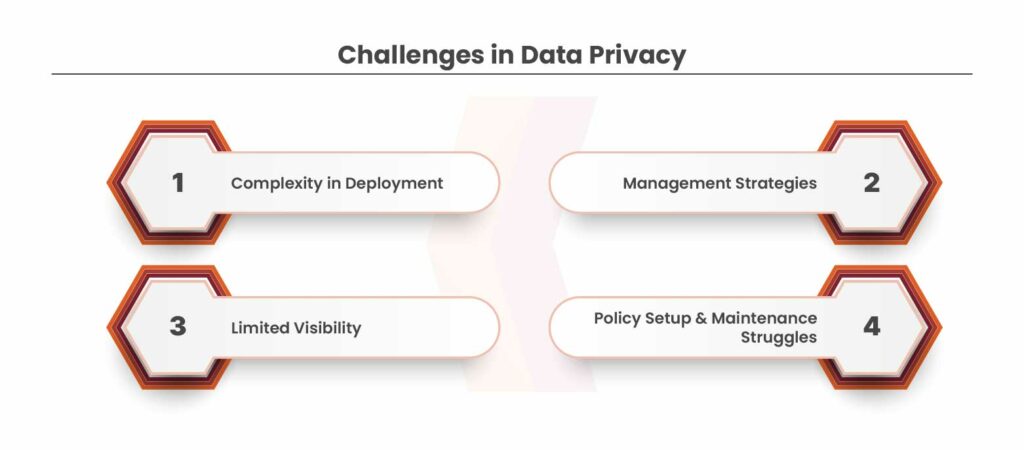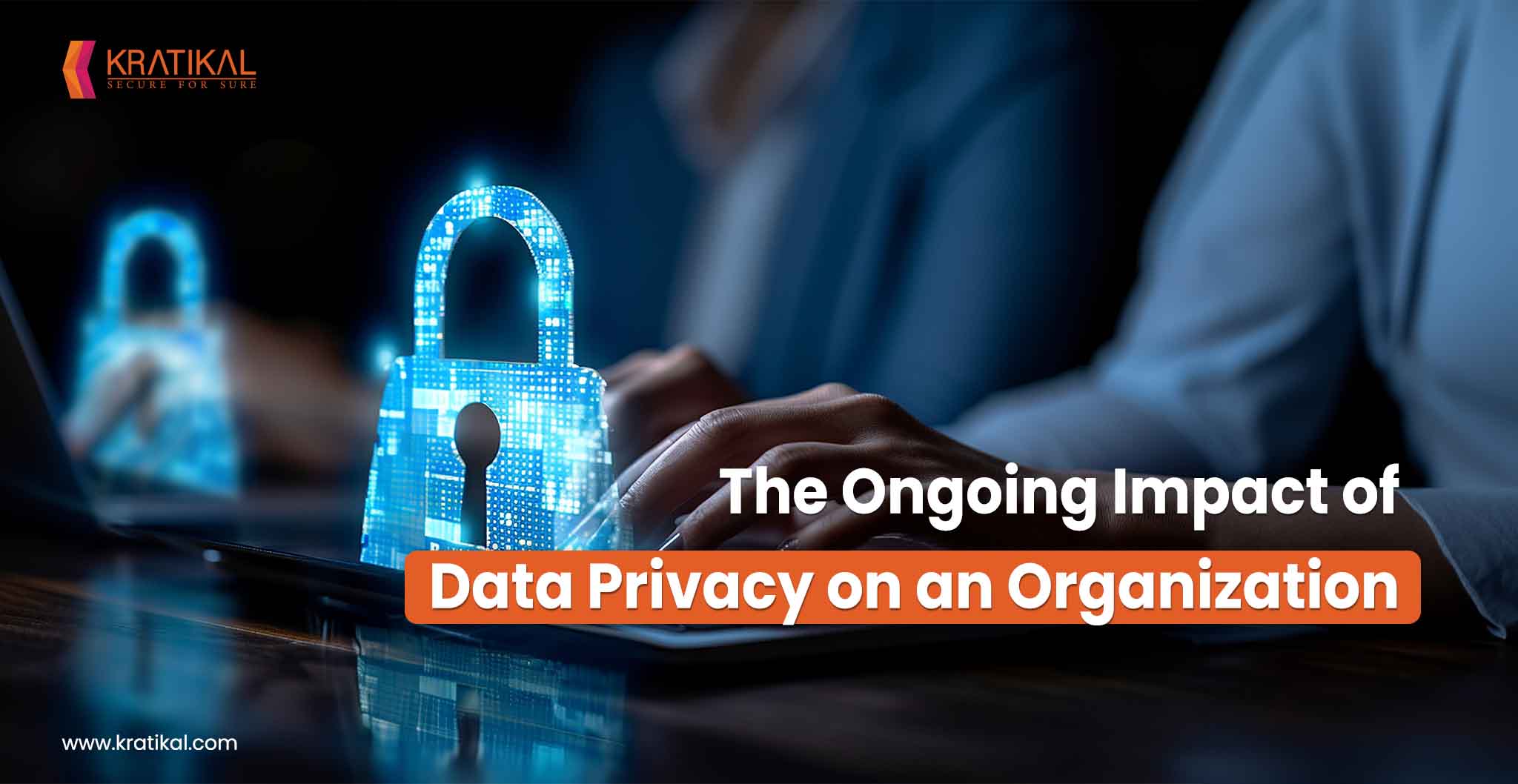In today’s digital era, data privacy has become a strategic necessity, not just a compliance checkbox. With 64% of consumers unwilling to engage with businesses they don’t trust to protect their data, and the average cost of a data breach reaching $4.45 million, mid-market and enterprise organizations must take data privacy seriously. This article delves into why data privacy matters, explores key regulations, outlines compliance best practices, and emphasizes how strong data protection drives long-term business success and customer trust.
Table of Contents
Why is Data Privacy Important for an Organization?
Before COVID-19 coronavirus took over the news headlines, data privacy was one of the major and critical topics of concern. Like any other societal trend, data privacy seems to work like a pendulum. It swings to and fro, hitting an apex and then swinging in the opposite direction with increasing speed. Data privacy is a matter of bigger issues, it emphasizes building trust and loyalty in users.
Several data breaches have made headlines by exploiting the data records of organizations listed among the Fortune 100 companies. Today, technology has evolved to such an extent that it takes only mere seconds on social media to spread the news of data privacy violations across every corner of the world. And the news travels so fast and far that it quickly tarnishes the reputation of a company for its failure in securing users’ data. This is why organizations need to protect their integrity and strengthen their customers’ trust by keeping data privacy as the top priority.
Many users are still oblivious of the fact that data privacy is a fundamental right for everyone of us and even a mere violation of that fundamental right can lead to a massive data breach. You will never know what a data breach is capable of doing to an organization unless you see news headlines pointing out the big organizations’ names. The names of acclaimed organizations with heavy fines imposed on them for disregarding data privacy laws.
Get in!
Join our weekly newsletter and stay updated
The Current Key Challenges in Data Privacy
Organizations have traditionally depended on legacy data protection tools to safeguard sensitive information. However, these systems often come with significant limitations. When we speak with companies facing issues with outdated solutions, several recurring challenges emerge, ranging from a lack of scalability and complex management to poor visibility and inadequate protection against modern threats.

Complexity in Deployment
In many organizations, legacy data protection tools fall short of providing comprehensive coverage due to their complexity in deployment and day-to-day management. These solutions often require multiple endpoint agents, which can consume excessive system resources and degrade performance. Additionally, organizations struggle to monitor vast amounts of data across distributed endpoints efficiently because these tools do not scale easily. As businesses expand or undergo structural changes like mergers or divestitures, maintaining consistent and gap-free data protection becomes increasingly difficult without complicating the infrastructure.
Management Strategies
Managing traditional Data Loss Prevention (DLP) systems is often a major challenge for security teams and analysts. These solutions frequently involve complex scripts, unreliable middleware, cumbersome rule configurations, and a high rate of false positives—all of which demand constant attention and manual effort. Mergers intensify complexity as organizations manage multiple siloed tools, vendors, and platforms simultaneously, increasing overhead with little improvement in securing sensitive data.
Limited Visibility
As organizations increasingly adopt SaaS platforms, cloud storage, and hybrid infrastructures, traditional data protection tools struggle to keep pace. These tools typically inspect content without understanding the broader context, such as who is accessing data, how, where, and why, resulting in limited visibility and increased false positives that overwhelm security teams. This lack of contextual insight also drives employees toward shadow IT, using unauthorized apps and methods to share data, which further obscures oversight and heightens the risk of data breaches.
Policy Setup and Maintenance Struggles
Developing and maintaining effective data protection policies is a major challenge for organizations. They must create detailed rules tailored to various data types, user roles, and environments. As the organization grows, updating these policies to align with evolving business requirements becomes increasingly complex. Striking the right balance between strong security and smooth user experience is difficult—overly strict policies can disrupt legitimate workflows, frustrate users, trigger false positives, and even encourage risky workarounds.
How to Conquer Risks in Data Privacy?
This modern interconnected world might leave organizations vulnerable to the threats growing from instances of cyber threats. With new cyber threats emerging every day, the risk of data being insecure online is becoming more risky than ever for every organization.
Many large companies have fallen victim to such cyber threat schemes and have lost a good amount of revenue due to lawsuits in recovering their losses. Thus, it is highly crucial to set permissions on files and dispose of stale data. Companies should take note of enacting and implementing data privacy rules and regulations for users and their private information.
It is advisable to implement better controls over organizations’ access and right to store the data of their users. Keeping proper data classification and governance adequately is highly beneficial in maintaining compliance management with data privacy laws like GDPR, HIPAA, ISO 27001, PCI DSS, and more. Besides this, the government of India has also proposed groundbreaking data privacy laws in India akin to Europe’s GDPR.
As per the data privacy law, technology companies in India will be required to get consent from citizens prior to collecting and processing their personal information. It is essentially required to be enacted as any personal data that is sensitive to someone could be further maliciously used by anyone with vicious intent. The personal information could be any of the following types of data privacy categories:
- Online Privacy: Personal data of the user that is handed over during online interaction.
- Financial Privacy: Financial information or records shared online or offline can be used for fraudulent practices.
- Medical Privacy: Confidential details of medical treatment or history of privileged information should not be disclosed to a third party.
- Residential Privacy Records: Sharing of addresses online can lead to the potential risk of unauthorized access.
Here are some guidelines to help ensure data privacy in an organization:
- Set a formal procedure in place to handle access requests to personal data.
- Have a habit of keeping minimal data collection and storage.
- Do not hand over your credentials to any third-party website.
- Implement strong data security policies and laws for privacy purposes.
- Leave no space for vulnerabilities in the network and IT infrastructure.
- Educate employees on security and privacy issues for creating a cyber-secure working environment.
- Enforce strong password usage to stop hackers from getting unauthorized access to your systems.
Every organization recognizes data as a critical corporate asset that must be protected. By following the above-stated guidelines, any organization can have strong data security to mitigate the loss of information, which directly leads to financial losses.
Book Your Free Cybersecurity Consultation Today!
Conclusion
Data privacy is no longer optional—it’s a strategic priority for every modern organization. With rising consumer expectations, stringent global regulations, and the increasing threat of data breaches, companies must proactively implement robust data protection measures. By overcoming legacy tool limitations, adopting modern security frameworks, and fostering a privacy-first culture, organizations can not only ensure compliance but also build lasting trust with customers, protect their brand reputation, and drive long-term business success.
FAQs
- What is data privacy in an organization?
Data privacy refers to safeguarding personal information from unauthorized access and giving individuals control over who can view, use, or share their data.
- Why is it necessary to secure an organization’s data?
Data privacy helps prevent misuse of personal information, like phishing, identity theft, and financial fraud, by protecting sensitive details such as banking and contact data from unauthorized access and hackers.








Leave a comment
Your email address will not be published. Required fields are marked *